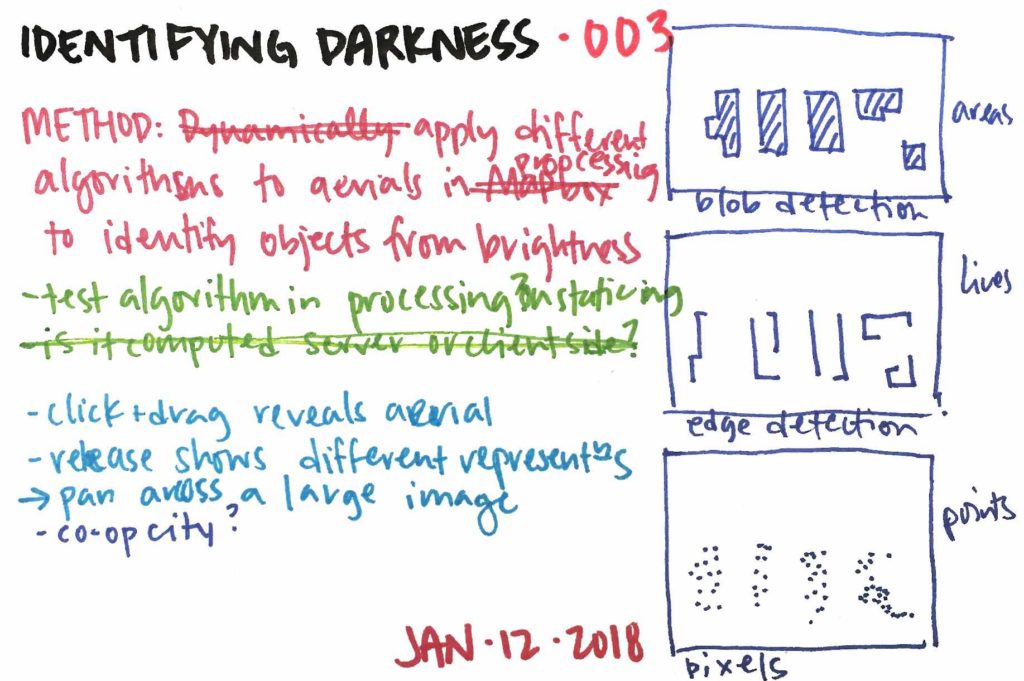
“Identifying Darkness” explores different methods of evaluating tone and, in turn, how tone can be used to identify the original imagery anew. Each algorithm — blob detection, edge detection, and HSB value selection — uses pixel brightness differently.
In the web interface version, the map’s extent is fixed with no ability to pan or zoom. Initially represented as an aerial image, when the mouse is pressed, one of the three tonal algorithms is displayed at the current scale. When released, it returns to the aerial representation. A double click steps to the next zoom level, allowing the user to see showing how the same representational techniques produce the varying patterns across scales.
Blob detection identifies areas of contiguous pixels where brightness values are below a particular threshold. These areas are described with random colors and used to mask the original aerial photograph. The masking process uses Processing’s blendmode(ADD).
Edge detection compares each pixel’s brightness value to that of its top, right, bottom and left neighbors. If the difference in brightness is above a particular threshold, the original pixel is represented (with its original color or black).
Lastly, the pixel’s brightness value is evaluated — if above a particular threshold, it is shown in black.